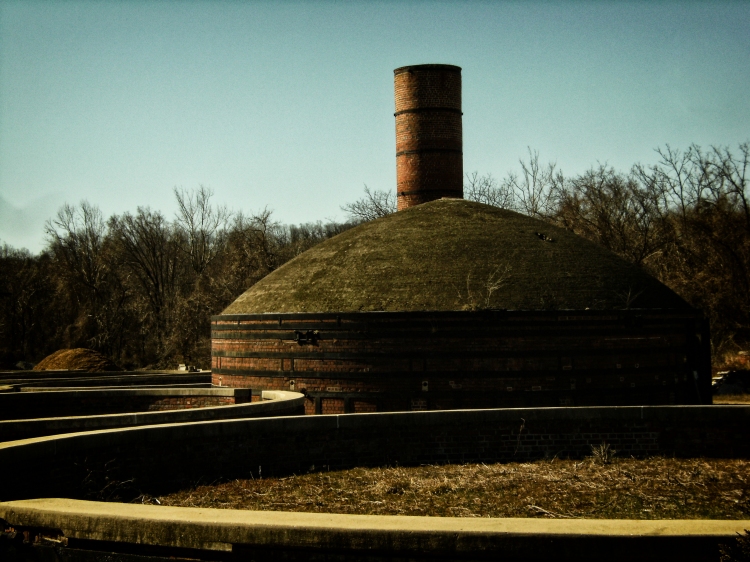DCinruins.
The first thing you probably notice are the ominous, alien domes on a broad and barren, weed-cracked slab. There used to be twelve of these in all, but only a few remain intact, like storage tanks for some antebellum space program, like sacrificial altars to a long forgotten god. Above it all, a lone smokestack rises, a mysterious sentinel of faded industry, a Panopticon in the harshest of labor camps. A washed out gravel road brings you to a chain link gate, padlocked against trespassers, mangled to suggest that at least a few have not been deterred.

This isn’t the site of some lost penal colony. But you’d be forgiven for not knowing. There’s no plaque to clue you in and no historical marker. And maybe that’s the most confounding thing about it – this is a registered historical site located within a well-funded park. As such, nothing suggests America’s casual indifference to the past quite like the shambling remains of the United Brick Corporation.
This former industrial site is an anomaly on the grounds of the carefully manicured National Arboretum. Dating back to the late nineteenth century, the United Brick Corporation was among the largest of numerous brick manufacturing concerns in Washington, many of which were literally operated out of the backyards of District residents. In a former life, those distinctive domes that first grabbed your attention were beehive furnaces used for firing carefully stacked bricks, a process that, depending on the weather, could take a full week.
There were once eight smokestacks standing some forty feet tall, including six older rectangular structures, but now the only trace of those are the cracked foundations scattered throughout the grounds. Closest to New York Avenue, you’ll find a long, low drying shed once used for storing unfired bricks before they made their way to the nearby beehive furnaces. Each of its 38 tunnels – just like the entryways to those distinctive domed beehives furnaces – has been shuttered with thick, wrought iron bars designed to protect any would-be explorers from the questionable structural integrity of this century old site.
The rest of the site is used to store mulch and gravel, presumably for routine upkeep in the arboretum grounds. I guess I don’t know for sure, but I have a feeling that this is hardly what those who sought to preserve these grounds had in mind when they applied to the National Register of Historic Places in 1977.
But it’s what happens when you leave the bureaucrats and lawyers in charge.
Ask Magellan, Neil Armstrong, or anyone else – mankind is at its most inspirational when the insurance premiums are sensible.
What a waste of good ruins.
Location
The National Arboretum
Learn more
Abandoned Washington DC by Thomas Kenning
Discussion
4 thoughts on “United Brick Corporation”
Trackbacks/Pingbacks
-
Pingback: - November 6, 2019





Was this the site of The Washington Brick Co. run by Thomas Somerville back in the 1950’s until 1972 when it closed?
Posted by Debbie | February 4, 2016, 8:01 pmI’m fairly certain that the Washington Brick Co was a competitor… I’m basing most of my information on this paperwork, however. http://focus.nps.gov/pdfhost/docs/NRHP/Text/78003061.pdf
Posted by Thomas Kenning | February 6, 2016, 10:57 pmI’m certain it was called The Washington Brick Co. and the address was Decatur(sp) Street. Construction slowed down in the early 70’s and they closed down. Their competition, I believe, was a brick company named Southern Brick.
Thanks for your response.
Posted by Debbie | February 7, 2016, 1:09 am